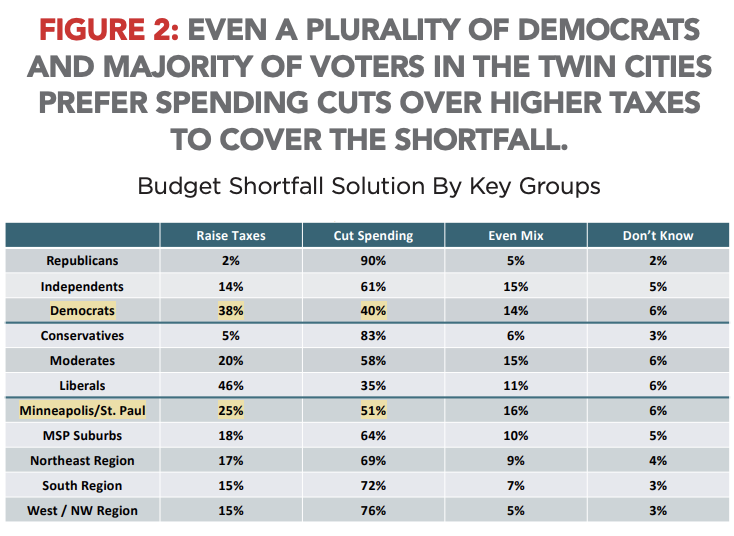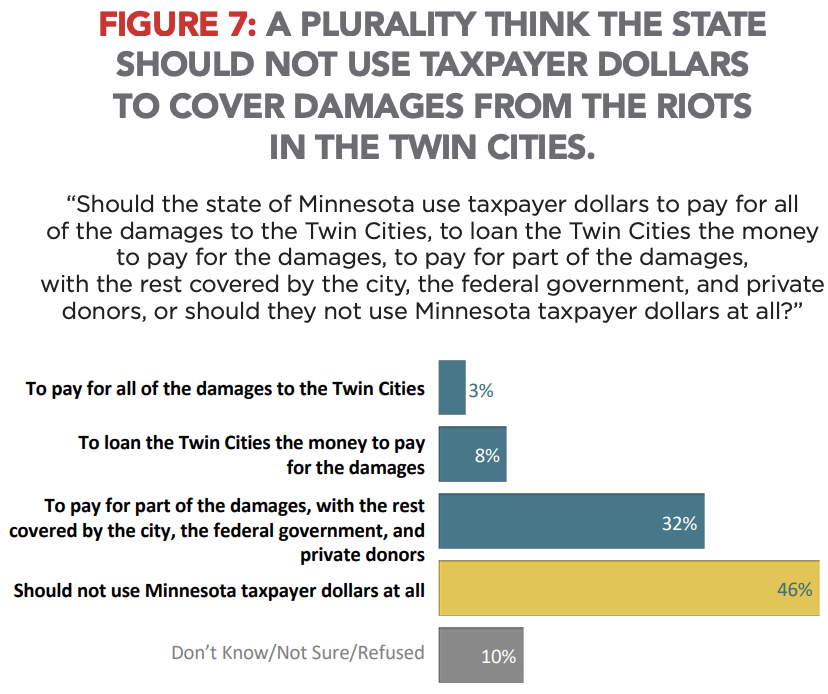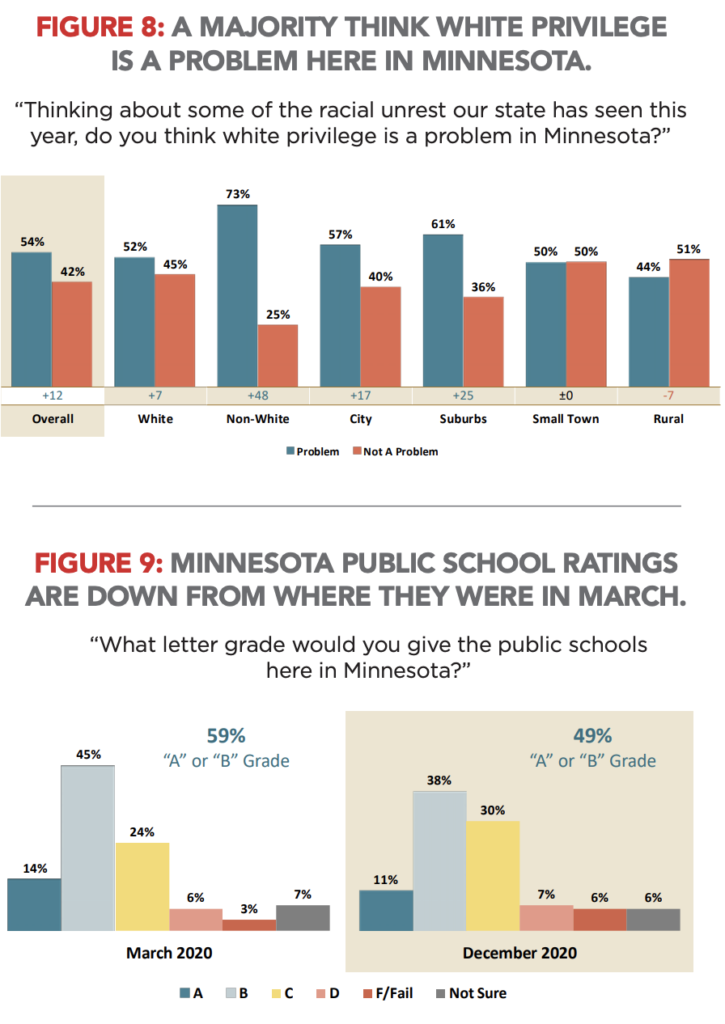Poll: Unequivocal marching orders
By wide margins, Minnesotans reject higher taxes either to pay down the deficit or to fund new spending programs.
As members of the Minnesota legislature prepare to wrestle with a COVID-related budget deficit, Minnesotans by wide margins are telling them to deal with it through spending cuts not tax increases, according to the January edition of the Thinking Minnesota Poll.
When asked their opinion about the best way to address the budget shortfall, a commanding 63 percent said to “cut spending.” Nineteen percent said to “raise taxes,” and 11 percent advocated an “even mix” of the two. The “cut spending” response is even more dramatic than when the pollster asked the same question for the October edition of the survey, when 59 percent said “cut spending,” 20 percent said “raise taxes” and 15 percent said “even mix.”
“It isn’t hard to see where Minnesotans are coming from. In a year characterized by government-ordered shutdowns and challenging times in many sectors of the economy, a large majority believe that government, like individual Minnesotans, should tighten its belt and not demand more tax revenue,” says American Experiment President John Hinderaker.

The poll was conducted for American Experiment by Meeting Street Insights, a nationally recognized polling operation based in Charleston, South Carolina. Using a mix of cell phones and landline phones, the company interviewed 500 registered voters in Minnesota between December 3-5. The margin of error for a sample size of N=500 is ±4.38%.
The directive from voters to policymakers becomes even more compelling when its depth and width among geographic and demographic interests are reviewed. Only self-described liberals favor closing the deficit through taxes (46-35 percent). Even Democrats favor spending cuts over taxes, although narrowly (40-38 percent).
Legislators may find the most striking result of the budget shortfall question in the unambiguous preference for spending cuts from the political middle. Political independents favor spending cuts by more than four-to-one (61-14 percent), and moderates favor cuts by 58-20 percent.
The groundswell of support for solving the deficit through spending cuts is shared dramatically throughout the state. The closest divide is in Minneapolis/St. Paul, where two respondents favor spending cuts for every person who prefers raising taxes. The rest of the state is stunningly unified for cuts by margins ranging from 3.5-to-one to five-to-one.

Echoing the same sentiment, Minnesotans are even more steadfast against legislators enacting new spending programs that require accompanying tax hikes by 71-22 percent. Democrats agree, 49-41 percent, and the widely influential independents also reject new programs funded by new taxes by 54 percentage points, 72-18 percent.
“Our polling shows that Minnesotans believe—correctly—that there is a lot of waste in state government spending. This month’s survey gives our legislators clear marching orders: Balance the budget by eliminating wasteful and low-priority spending. And whatever you do, don’t try to enact new spending programs,” says John Hinderaker.

Overall, respondents preferred cuts to come from welfare programs (37 percent) and infrastructure (32 percent), although that priority switched between the Minneapolis/St. Paul metropolitan area and Greater Minnesota.


Underwriting the Riots
While policymakers in the Twin Cities continue to struggle with how to pay for the massive damage inflicted on their cities by rioters and arsonists during the weeklong George Floyd riots at the beginning of the summer, a large plurality of Minnesotans (46 percent) believe the legislature should devote no Minnesota taxpayer dollars to pay for the damage.
• Thirty-two percent said the legislature should underwrite “part of the damages, with the rest covered by the city, the federal government, and private donors.”
• Eight percent preferred taxpayer assistance coming in the form of a loan.
• And three percent want the legislature to pay for “all of the damages to the Twin Cities.”

Rating Public Schools
The reputation of Minnesota’s public schools appears to have taken a hit as educators cope with the challenges of COVID-19. The pollster asked respondents to assign a letter grade to indicate the achievement of public schools in both the March and the current edition of the survey.
While schools earned an “A” or “B” from 49 percent of Minnesotans in December, this is a full 10 percent decline from March. Six percent assigned “F” grades to the schools in the latest poll, twice the number in March.
“During the COVID epidemic, the public schools have failed Minnesotans. Remote learning has been sub-par for nearly all kids, and disastrous for many. It is no wonder that Minnesotans’ perceptions of public-school performance have dropped, especially among parents. The silver lining is that many Minnesotans are, for the first time, taking a serious look at alternatives to underperforming public schools,” says American Experiment Policy Fellow Catrin Wigfall.
White Privilege
A small majority (54 percent) of Minnesotans think “white privilege” is a problem in Minnesota, especially in the context of racial unrest earlier this summer. The strongest majority was among non-white Minnesotans (73-25 percent). In contrast, a majority of residents in Greater Minnesota (51-44 percent) do not view it as a problem.
